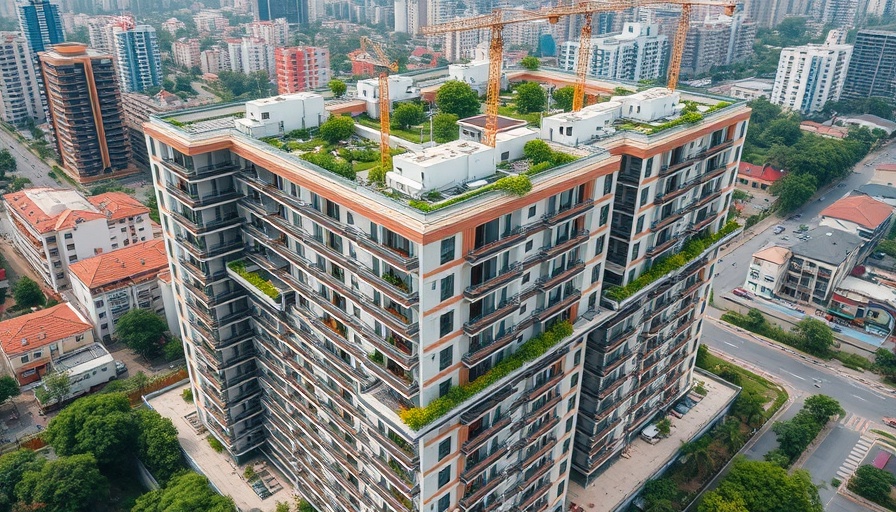
Pioneering Sustainability: The Douglass at Bridge District
The Bridge District in Washington, D.C. is making headlines as home to the nation’s largest net zero carbon residential project—the Douglass. This ambitious development not only aims to set new standards for sustainability but also aspires to enhance community well-being through innovative design and accessibility. Spanning a staggering 740,000 square feet, the Douglass will be the first multifamily building in the U.S. to pursue Zero Carbon Certification from the International Living Future Institute (ILFI).
What Makes the Douglass Unique?
Built by Redbrick LMD, the Douglass is expected to house 757 residential units, emphasizing sustainable living by running entirely on renewable energy sources. Its construction incorporates a 200 kW rooftop solar array with an anticipated annual generation capacity of 200 MWh, demonstrating how modern architecture can dramatically reduce carbon footprints
Furthermore, with over 5% of its parking spots equipped with EV charging stations and additional 15% prepared for future installations, the Douglass is leading the charge in supporting electric vehicle infrastructure—a vital step toward sustainable urban living.
The Environmental Impact: Reducing Carbon Footprint
At the core of this initiative is the use of innovative construction techniques, with an on-site concrete batch plant producing a specialized mix that reduces carbon emissions by 30% compared to traditional methods. This localized production not only minimizes transportation-related emissions but also significantly contributes to the project’s sustainability goals.
Building for Community: Affordable Housing Matters
Amid its focus on sustainability, the Douglass is designed with social equity in mind, featuring approximately 78 units set aside for affordable housing. This commitment enables low-to-moderate-income families to access high-quality living conditions, making the area more inclusive and ensuring a diverse community.
Expansive Development: The Bridge District
The Douglass is just the beginning of the ambitious Bridge District project, which encompasses plans for nearly 2.5 million square feet of mixed-use development. With comprehensive amenities including access to parks, retail spaces, and proximity to public transportation along the Washington Metro’s Green Line, the Bridge District is poised to become a vibrant neighborhood that promotes work-life balance and community engagement.
Future Trends in Sustainable Living
This groundbreaking development reflects a growing trend in urban planning, where sustainability and community well-being are tightly interwoven. As cities around the globe strive to mitigate climate change impacts, projects like the Douglass serve as blueprints for future developments. The combination of advanced technologies, community-focused planning, and ongoing commitment to these ideals will likely influence how urban areas evolve in years to come.
Your Role in the Sustainable Future
As homeowners and contractors alike consider how best to engage in sustainability efforts, exploring developments like the Douglass can provide valuable insights into what effective eco-friendly construction can look like. Knowledge of these practices can be a great asset in pursuing renovations or new builds that prioritize conservation and community health.
Conclusion
The Bridge District and its flagship building, the Douglass, exemplify a bold step toward sustainable urban living, merging innovative architecture with community-focused strategies. By prioritizing net zero carbon solutions, this development sets a standard for what modern housing can achieve and serves as a model for future projects nationwide. Whether you are a homeowner, a contractor, or simply a community member with an interest in how we shape our environments, understanding the implications of such developments is essential.
 Add Row
Add Row  Add
Add 




Write A Comment